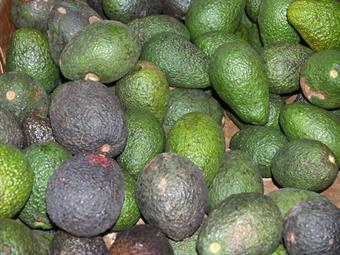Fresh is best - always has been.
If you are going to eat, you are best to eat the most nutritious food; but how do you tell what is and isn't fresh. Here are some tips.
Apples
When selecting apples, look for those that are firm and free of bruises. Look for any discoloration as when apples are past ripeness they start to oxidise becoming brown and soft or mushy. Your choice of an apple should also depend on what you are choosing an apple for - if you are looking for an eating apple e.g. to serve in a salad or with cheese, then you want a ripe or nearly ripe apple with full colour and no discoloration, however, if you are looking for a cooking apple e.g. to be used in a pie or crumble, then look for older apples that might be just past the ripe stage.
Asparagus
When selecting Asparagus look at the spears- ideally these should be bright green in colour and straight, firm and not bendable. Asparagus spears should be closed tightly with a dark green or purple tinge to the tips. If the tips are yellowish or dried out, the asparagus is too old.
Avocados
Choose avocados that have roughly-textured skin as those that are smooth skinned tend to have less flavour. Avocados are ready to eat when their skins are dark and they are very slightly soft when pressure is applied.
Bananas
When choosing bananas you need to consider when you intend to use them and how they are to be served. If you want bananas to be ready to eat, look for those where the skin that is uniformly yellow with no traces of green, this will ensure the skin is easier to peel and the flesh is still firm. As bananas ripen they develop brown spots that eventually merge to make the banana completely dark brown. Overripe can still be useful however, for example in recipes such as banana bread and in fruit smoothies. If bananas are to be served at a later date choose those that are uniformly green as these will ripen slowly at room temperature.
Beetroot
Choosing beetroot requires you to look at the entire vegetable, including the leaves. The best beetroot should have crisp leaves (not wilted) and firm roots. Roots should have no spots or blemishes, as that can signal older produce. Smaller beetroot can taste sweeter than the larger ones.
Broccoli
When choosing broccoli, look for those with closed, green florets without brown spots.
Broccoli stalks should be firm without any soft patches and should not be discoloured or slimy. Surrounding leaves should not be wilted.
Carrots
Look for firm carrots with relatively smooth skin; avoid thick carrots, as they often have tough centres and if you buy fresh bunched carrots with green tops, these should be removed before storing as they can take water and nutrients away from the roots.
Grapes
Choose grapes that are firm to touch as soft grapes or those that feel very watery tend to be over ripe. If possible, taste test before purchasing and choose those with a silver-white bloom over skin which indicates freshness and minimal handling.
Leeks
Here you should look for leeks that have dark green leaves and white bulbs. Leaves that have yellow and bulbs which contain brown spots are usually overripe.
Mushrooms
Look for mushrooms that are free of bruises and other blemishes. Avoid mushrooms with bruises or pits or mushrooms that feel slimy and check that your chosen mushrooms smell nice and earthy. Oyster and porcini mushrooms should open where the cap meets the stem and the gills under the cap should be light in colour.
Onions
Precautions here depend on which type of onion you are using- white/red etc. Generally choose onions that are clean, have no opening at the neck and have dry outer skins. Avoid onions those that have sprouted, or show signs of mould.
Potatoes
Choose firm potatoes that are free of bruises and cracks and avoid any that are turning green. Also try to choose those with a regular shape, so there won't be too much waste in peeling.
Raspberries and strawberries
Choose strawberries and raspberries that are bright red in appearance without bruises and smell for signs of freshness. Look carefully to be sure that there are no signs of mould, common signs include the presence of white, cotton-like strands in and around the berries.
Spinach and other greens
Choose spinach that is dark green with no signs of yellowing, sliminess, or wilting.
How Can You Keep them Fresh
No one wants to shop daily; so even if you do get quality fruit and veg, it is critical that you understand, store or preserve them the very best way, in order to maintain their food value. We have an e book that can help you with that. See http://www.acsebooks.com/product-food-preserving-pdf-ebook-6032.aspx
LEARN MORE ABOUT EATING BETTER